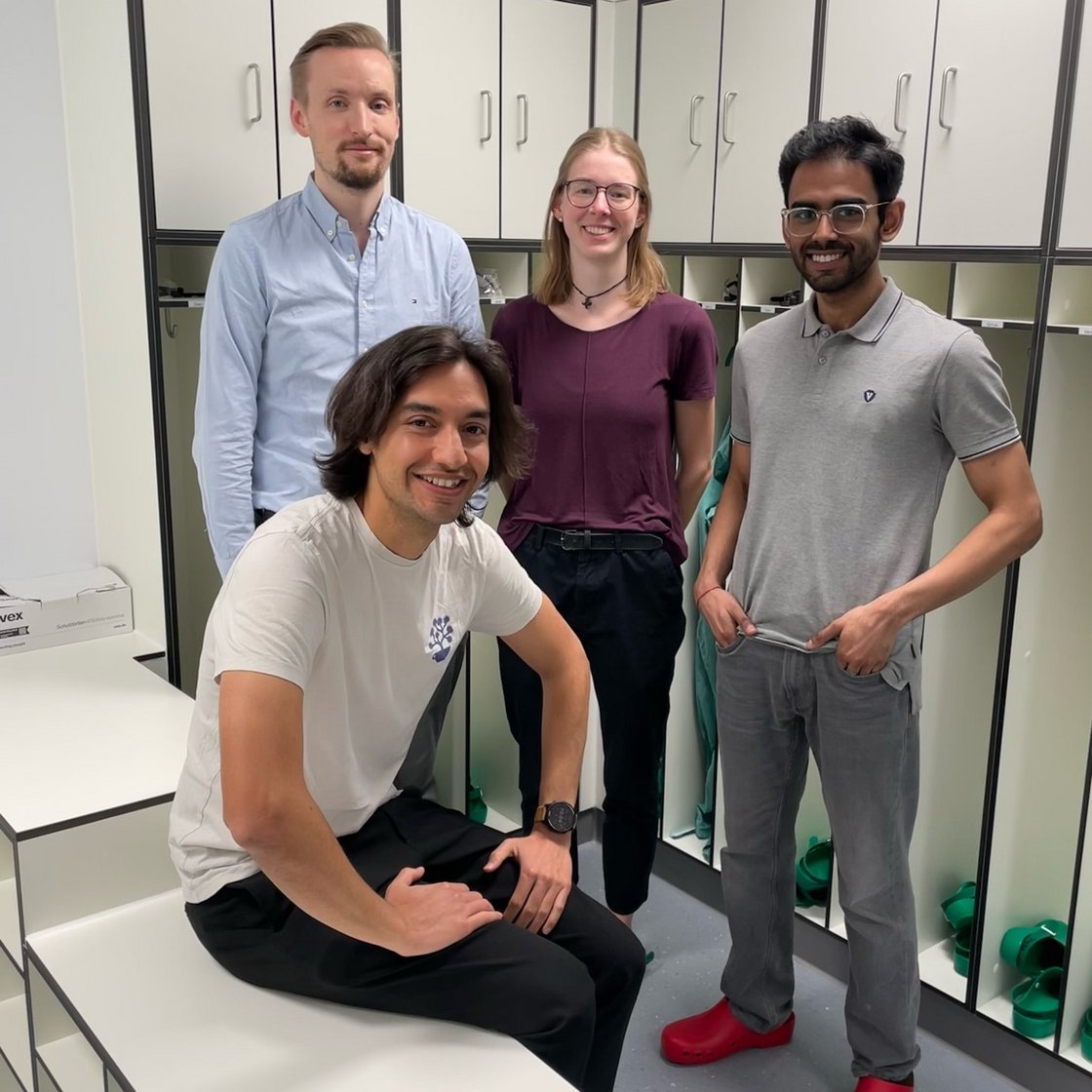Arboviruses & extracellular vesicles in innate antiviral immunity
Our interdisciplinary group studies arbovirus infection and innate antiviral immunity, researches novel antiviral strategies and develops tools for virus diagnostics. Our primary research areas are:
- Extracellular vesicles in innate antiviral immunity
- Arbovirus infection & site-of-bite antiviral approaches
- Fluorescent nanodiamonds for ultrasensitive virus diagnostics
Together with our collaboration partners, we apply a broad range of methods—spanning classical virology and biochemistry to single-nanoparticle surface profiling and quantum sensing. We use biophysical methods for EV and virus analysis (NTA, DLS) and analyze surface epitopes involved in cellular attachment using bead-assisted and direct nanoscale flow cytometry (nFCM). Our experimental systems include primary human cells, insect-derived cells and advanced in vitro models such as ex vivo cultured human tissue and 3D Air–Liquid Interface (ALI) skin cultures.
Extracellular vesicles in innate antiviral immunity
Extracellular vesicles (EVs) are membrane-bound particles released by virtually all cell types. We recently discovered that EVs present in virus-transmitting body fluids—such as semen and saliva—can inhibit infection by flaviviruses, alphaviruses, and filoviruses by blocking viral attachment (Groß et al., Nat. Microbiol., 2024, Conzelmann & Groß et al., J. Extracell. Vesicles 2020). These viruses exploit phosphatidylserine (PS) to mimic apoptotic cells—a mechanism known as “apoptotic mimicry”—to facilitate host cell entry. EVs themselves carry high levels of PS and outnumber virions by more than 10,000-fold in these fluids, likely limiting direct transmission of mosquito-borne viruses like Zika, Dengue, and Chikungunya. This work uncovered a lipid-based, receptor-saturating innate antiviral mechanism mediated by EVs. We are now investigating how viruses regulate the exposure of PS and other phospholipids to their advantage, and how these lipids contribute to broader innate immune functions of EVs.
Additionally, we are screening for regulators of EV secretion using human peptidome libraries provided by CRC1279. Although EV biogenesis and release are regulated cellular processes, targeted modulation by external agents remains challenging. Using EV reporter cell lines and high-throughput screening, we aim to identify both inhibitors and enhancers of EV release. These insights will deepen our understanding of EV biogenesis and may enable the modulation of disease-specific EV subsets for therapeutic purposes.
Arbovirus infection & site-of-bite antiviral approaches
Arthropod-borne viruses (arboviruses) are transmitted between hosts primarily by vector insects (such as mosquitoes) and include members of the Flaviviridae (e.g., Dengue-, Zika-, West Nile virus) and the Togaviridae families (e.g., O’nyong’nyong- and Chikungunya virus). No specific antiviral treatment is clinically approved for any of these viruses. Our lab develops antiviral strategies that acts against multiple viruses directly at the “site-of-bite”, using cultured skin cells and organotypic 3D skin models. These approaches aim to block infection directly after inoculation, preventing systemic viral spread and subsequent disease
Fluorescent nanodiamonds for ultrasensitive virus diagnostics
In this highly interdisciplinary project (“Ultrasens-Vir”) funded by the Carl-Zeiss-Foundation, we’re teaming up with experts in surface-modification chemistry (Prof. Weil, MPI Mainz) and quantum optics (Prof. Jelezko, UULM) to develop a next-generation virus diagnostics methodology exploiting the unique optical properties of fluorescent nanodiamonds for ultrasensitive and multiplexed diagnostics, initially focussed on respiratory viruses.
Lab Members
Shreyans Chatterjee, M.Sc. | PhD student | 2023- |
Ariel Asuzano, M.Sc. | PhD student | 2024- |
Hanna Reßin, M.Sc. | PhD student | 2024- |
If you’re interested in arboviruses, lipids, extracellular vesicles or nanodiamonds and want to join us, as a HiWi or for a bachelor, master or PhD/MD thesis, please contact Dr. Rüdiger Groß by e-mail any time!
Recent publications: https://scholar.google.com/citations?user=cBG0h7UAAAAJ&hl=en

Group picture (March 2025): Ariel Asuzano (front), Dr. Rüdiger Groß, Hanna Reßin, Shreyans Chatterjee (left to right)
